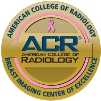Breast Health, Cancer Diagnostics & Mammography
 Because detecting breast cancer early is so critical to successful treatment, Pacific Medical Centers has developed our Diagnostic & Wellness Center for Women (DWCW) to invite more women into a comforting atmosphere to have these important tests done.
Because detecting breast cancer early is so critical to successful treatment, Pacific Medical Centers has developed our Diagnostic & Wellness Center for Women (DWCW) to invite more women into a comforting atmosphere to have these important tests done.
We offer state of-the-art technology, including 3D Mammography, along with a network of highly qualified experts to ensure accurate screening and diagnostic breast imaging in a private and peaceful space. We have also been designated a Breast Imaging Center of Excellence by the American College of Radiology.
Downloadable PDF Brochures
Breast Imaging
What is 3D Mammography?
What You Need to Know About Breast Density
When to get screened
We encourage all women to follow the American Cancer Society guidelines for early detection, and to talk to your doctor about the best screening program for you.
- Women ages 40 to 44 should have the choice to start annual breast cancer screening with mammograms (x-rays of the breast) if they wish to do so.
- Women ages 45 to 54 should get mammograms every year.
- Women 55 and older should switch to mammograms every 2 years, or can continue yearly screening.
- Screening should continue as long as a woman is in good health and is expected to live 10 more years or longer.
Women should know how their breasts normally look and feel and report any breast changes to a health care provider right away.
Your risk for breast cancer is due to a combination of factors. The main factors that influence your risk include being a woman and getting older. Most breast cancers are found in women who are 50 years old or older.
Women who are at higher risk for breast cancer, should have a screening every year. When to start screening is based on your personal risk factors. Women may be at a higher risk for breast cancer when there is a family history of breast cancer, previous breast biopsy with abnormal cells, and or have dense breasts.
Breast cancer and health equity
Overall, white women are slightly more likely to develop breast cancer than African American women, although the gap between them has been closing in recent years. In women under age 45, breast cancer is more common in African American women. African American women are also more likely to die from breast cancer at any age. Asian, Hispanic, and Native American women have a lower risk of developing and dying from breast cancer. Risk in different groups also varies by type of breast cancer. For example, African American women are more likely to have the less common triple-negative breast cancer.
Comprehensive breast care
If screening shows the need for further intervention, we offer comprehensive breast care, including a team of surgeons who work collaboratively with PacMed specialty services, including our hematology and oncology doctors, and with Radia for dedicated breast radiology expertise. Our family of organizations also includes the Swedish Cancer Institute for genetic testing, radiation oncology and plastic surgery for reconstruction.
Next steps
Talk with a health care provider about your risk for breast cancer and the best screening plan for you.
Current PacMed patients can now schedule your mammogram online with MyChart.
Screening Methods
Depending on your health needs, the screening and diagnostic steps your doctor recommends may include the following services, all offered at PacMed:
Digital mammography
We are pleased to offer Genius 3D Mammography (also known as Hologic 3Dimensions Mammography) alongside our 2D digital mammography technology. These latest innovations in breast screening send images to a computer instead of film. This gives our radiologists a closer view with different perspectives for a better assessment of the image. Digital mammography is faster and uses less radiation than film mammograms. It is especially helpful in patients with dense breast tissue. Digital mammography is available at two PacMed clinics: Beacon Hill and Canyon Park.
3D mammography (also referred to as Digital Breast Tomosynthesis) produces digital, three-dimensional images of the breast. In this format, our radiologists can view the image in one-millimeter slices. This makes it possible to examine breast tissue at a level of detail never before possible, detecting 20%-65% more invasive breast cancers.
3D mammography is now considered routine and is preferred among radiologists. Most major insurance plans cover a 3D mammogram once every 12 months or every 366 days. To ensure peace of mind, it is always a good idea to confirm coverage with your insurance provider before your appointment.
Review breast imaging insurance coverage by state.
For mammography, the codes to ask your insurance about would be:
- 2D Screening: 77067
- 3D Screening: 77067 and 77063
- 2D Diagnostic: 77065 (unilateral) or 77066 (bilateral)
- 3D Diagnostic: G0279
Recognized for Excellence
 The Diagnostic & Wellness Center and Canyon Park Mammography have both earned accreditation with the American College of Radiology. This means we have passed a rigorous review process conducted by board certified radiologists and medical physicists. When you choose Pacific Medical Centers Mammography, you can feel confident that your care is backed by nationally recognized standards for safety, accuracy, and professionalism.
The Diagnostic & Wellness Center and Canyon Park Mammography have both earned accreditation with the American College of Radiology. This means we have passed a rigorous review process conducted by board certified radiologists and medical physicists. When you choose Pacific Medical Centers Mammography, you can feel confident that your care is backed by nationally recognized standards for safety, accuracy, and professionalism.
These guidelines are adapted from the American Cancer Society (ACS).


